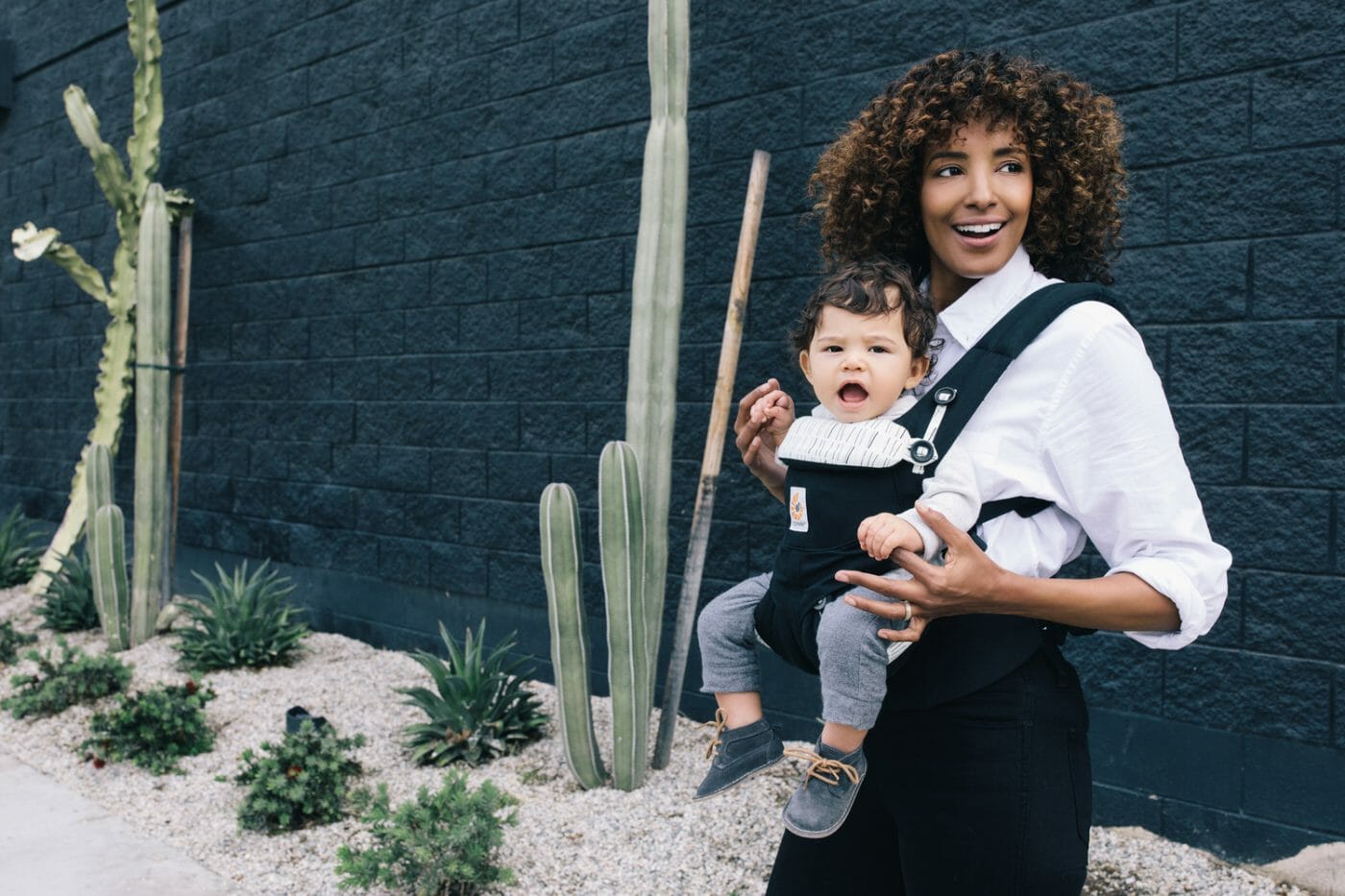
Baby carriers are a lifesaver for many parents. But as a first-time parent, you probably have a lot of questions about baby carriers, like when can I start putting my baby in a baby carrier and at what age or weight can my baby sit forward facing in a baby carrier?
With my first child, I had lots of babywearing questions. But with a little research, and learning while babywearing with my son, I found the answers and am here to answer your questions about forward facing baby carriers.
When is it safe to put my baby in a baby carrier?
You can start using a baby carrier from day one. Most are meant to hold babies when they’re a newborn up to 2-3 years old. Babies who are younger than 4-6 months should only be carried in the inward facing position in your newborn carrier with proper head, neck, hip and bottom support.
When can baby face forward in a carrier?
Unlike car seats where age and weight are the two factors used to determine when babies can face forward, baby carrying positions are based on age and development. You’ll know your baby is ready to face forward as soon as she’s out of that bobblehead phase. Once her neck muscles are strong enough to steadily support her head, typically between 4-6 months old, then you can safely face her forward in your baby carrier.
How will I know if my baby likes facing forward in her carrier?
About the same time your baby develops good head control, her development is changing. Around 6 months, she will go from being so interested in your face, to wanting to look around and see everything that’s happening around her. This makes it the perfect time to move her from inward to outward facing because she can hold her head up and see the interesting outside world.
SHOP Omni breeze and dream Carriers
But even when your baby is strong enough and shows interest in her environment, you still need to pay attention to her cues. Especially at first, babies can become overstimulated or even get scared from a sensory-overloaded environment. So while your baby will enjoy having more freedom to move her arms and legs in a forward-facing position, and turn her head from side to side to see all the lights and movement, pay attention to fussiness, crying and even silence to make sure your baby is doing OK in this position. I’ve found that sometimes you have to switch between the inward and forward-facing positions at first, which is totally normal.
Is forward facing babywearing unsafe for my baby?
You may have heard that forward facing babywearing can be harmful to your baby. This is only true if you don’t follow the age and developmental standards and pay attention to your baby’s cues.
Here’s what you need to know:
Will forward facing hurt my baby’s neck? When babies are forward facing in a carrier there is less head control, which is why it’s safest to wait until your baby can hold her head up without any wobbling. For most babies that is between 4-6 months old, but each baby is different. Also, don’t let your baby sleep when she is forward facing as her head could fall forward and restrict her airways.
Is forward facing harmful to my baby’s hips? It’s only harmful if your baby carrier doesn’t properly support your baby’s hips, bottom, and legs. When seated in the front facing carrier, your baby’s lower half should be in what’s called the “M” or frog-leg position.
Is forward facing too overstimulating for my baby? Most babies who are old enough and have hit their developmental milestones love facing forward. But every baby is different, and those who were born premature or have a more sensitive temperament may easily get fussy facing forward. While it’s harder to see your baby’s face in this position, just listen and watch for clues to know if your baby is enjoying facing outward or not. You may have to start her facing forward somewhere that she’s comfortable with that’s not really noisy or busy or ease her into facing forward with short time increments and then build up to longer outings in different places.
Find The Perfect Baby Carrier For You
Last thing to note! When it comes to comfort and support, our carriers also take the caregiver into consideration. While outward facing will be exciting for everyone to try, it can put stress on a caregivers back if used for long periods of time. We recommend only using that carry position for small amounts of time. Happy carrying!



